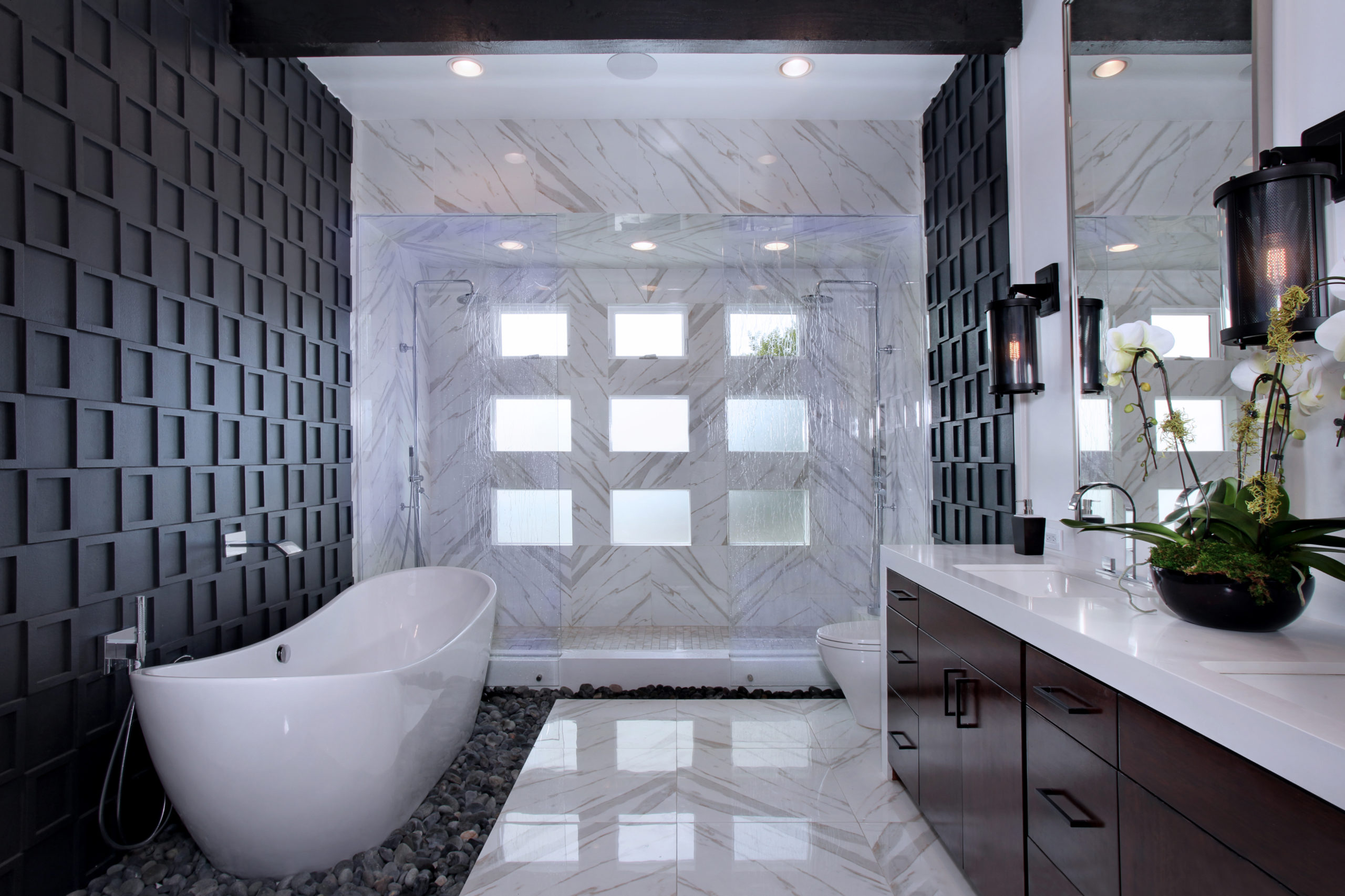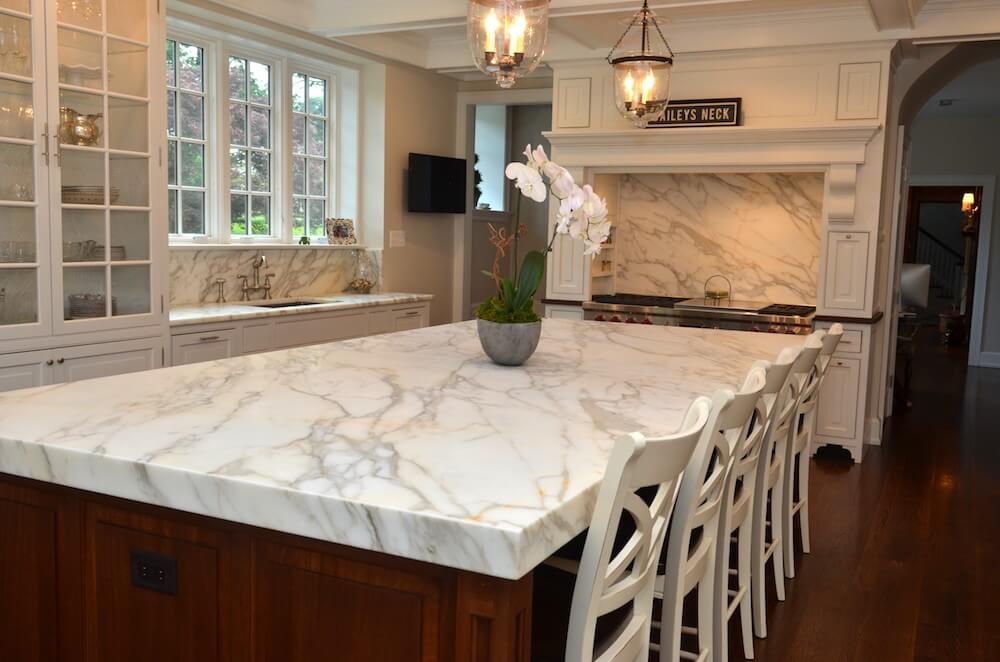Society has utilized natural stone as a building material since the dawn of human history. Once chiefly used to erect temples, tombs, and monuments, natural stone has established itself as the premier choice for homeowners and property managers alike who look to imbue an aura of natural beauty into their interior and exterior spaces.
We tout that no two natural slabs — and by extension, their final products that adorn kitchens and bathrooms — are identical. By being knowledgeable of the mining practices of marble, granite, and other natural stone countertops, a greater appreciation and understanding of these truly unique components that fill your space can lead to a more refined degree of worldly wonder.
Natural Stone Countertops: A Look Into the Extraction Process
How Is Granite Mined?
The initial step of producing a granite slab is to mine the raw materials from the earth. These slabs are obtained from unique sites — known as quarries — from around the globe. Several popular types of granite come from countries such as Brazil and India, although the stone can be found in many locations in the U.S. as well.
Granite is one of the most favored dimension stones, which is stone quarried for the sole purpose of creating blocks or slabs. Granite is found close to the surface, which means fabricators can cut it from shallower quarries. Large teams with a series of sizable, specialized equipment and resources like high-capacity extractors, cranes, and tamb rock machines, slowly dig around granite slabs to break them free. Essentially, small holes are drilled to outline the desired block size, and explosives are placed inside them to methodically create a blast strong enough to separate the granite from the bedrock without compromising the block’s integrity. The falling block must be directed onto soft sand so it does not split or crack at the wrong angle.
After the granite has been mined, it will be sent to a stone cutting facility to be transformed into slabs. Technicians then use milling machines to cut and polish the granite, shaping it into slabs 7-9 feet long. When you visit a granite showroom, it is these slabs that are typically shown.
How Is Marble Mined?
Locating a potential quarrying site is the initial step in the marble mining process. An exposed outcrop marble is the surest way for a geologist to identify a potential vein. Where the marble gets cut determines the entire appeal of the slab, and ultimately, the countertop. For example, one cross-cut across as opposed to along the vein will have a staggeringly varied appearance.
Mining marble from a quarry involves creating a bench wall, which requires synthetic diamond wire and diamond-tipped drills to separate the rock to form a vertical plane. This involves drilling holes in the marble from the top of the quarry and lining up another drill hole from the side. The marble is fed through these holes and connected to a machine that keeps tension on the wire as it slices through the marble. In certain cases, particularly when quarries are located inside mountains, a chainsaw-like mechanism is used. Oftentimes, a resin is applied to fill cracks throughout the marble’s surface. After polishing, only a marginal amount of the surface will feature the resin coating, maintaining the purity — and breathtaking beauty — of the finished stone.
Some of the most notable quarries are in Italy, Canada, Spain, India, China, and Germany, although marble can be found across the world. In fact, most marbles are named from the quarry where they were found the first time — such as Carrara.
From Slab to Fab: Shaping Natural Stone Countertops
Integrating a slice of art, history, and earth itself into your space is a monumental occasion. The mining practices of natural stone have come a long way; not only to benefit the workers and the industry at large, but magnify the brilliance of countertops all over the world with sophisticated techniques. These stone slabs, while originating from massive quarries, are anything but mass-produced carbon copies. Fabricators take great care in hand-picking luxurious natural stone to shape into countertops.
After natural stone is extracted from its quarry, slabs are transported to a fabrication facility, where specialists cut and shape the stone in adherence to the specific needs of countertop projects. It’s this stage that bonds customers with their natural stone by enabling them to be selective in their unique vision and see it come to life.
The Journey, Completed: A Slice of the Earth Adorning Your Space
Home and business owners strive to distinguish their interior and exterior with distinct color palettes, reliable — yet stunning — materials, and veritable feng shui. With marble and granite fabrication at the helm, they’re able to harness the power of these design-forward pillars as well as ingrain a world-class level of craft and story into their residence or commercial space.
What differentiates natural stone countertops — including their fabrication processes — from the alternatives is the journey; the oft-international voyage from being one with the earth to becoming a striking fixture that will stand the test of time as it did before extraction. A marble or granite countertop does so much more than amplify the aesthetics of your space (which it does with timeless aplomb); it’s a testament of human ingenuity, the epitome of taking something raw and primeval and transforming it into a piece of art to be appreciated for generations upon generations.
In one sense, the narrative of natural stone from the quarry to the countertop appears to come to a close after its installation. However, we believe in the idea that it’s simply a turning of the next chapter; a torch being handed off for you and yours to see the tale through, create memories, and celebrate a sliver of the everlasting.
Partner With Us for Natural Stone Countertop Installation
For more information about our natural stone products, including gold-veined Typhoon Bordeaux granite countertops and the illustriously-pewter Fantasy Brown marble countertops, reach out to Colonial Marble & Granite today!





